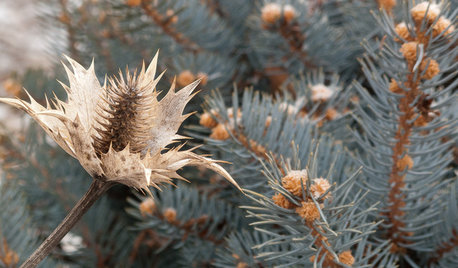Plum tree varieties, Denver
fredbram
15 years ago
Related Stories

FRUIT TREESHow to Grow Your Own Juicy Plums
Easier than other stone fruits and with a variety of colors to choose from, plums are a versatile garden addition
Full Story
WINTER GARDENINGInspiring Winter Scenes From the Denver Botanic Gardens
Use seed heads, bare branches and grasses to design lovely garden displays when the ground is frozen
Full Story
GARDENING AND LANDSCAPINGCrazy for Fruit Trees
Whether a single citrus or a mini apple orchard, even the smallest landscape space can bear deliriously delicious fruit
Full Story
EDIBLE GARDENSHow to Add an Apple Tree to Your Edible Garden
Readily available, beautiful and fragrant, apple trees offer four-season interest along with crisp, juicy fruit
Full Story
EDIBLE GARDENSHow to Grow 10 Favorite Fruit Trees at Home
Plant a mini orchard in fall, winter or early spring to enjoy fresh-off-the-tree fruit the following year
Full Story
SPRING GARDENING7 Spectacular and Practical Spring-Flowering Trees
Put on a beauteous show in the garden with a landscape tree awash in flowers — just do your homework first
Full Story
FARM YOUR YARDIf You Have Room for Only One Fruit Tree ...
Juice up a small garden with one of these easier-care or worth-the-effort fruit trees for a mild climate
Full Story
ARBOR DAY8 Reasons to Plant a Great Tree
Beauty is its own reward, but the benefits of planting the right tree in the right place go way beyond looks
Full Story
TREES7 Deer-Resistant Flowering Trees to Plant this Fall
If you live in a neighborhood with roaming deer, consider these beautiful trees that won't tempt hungry guests
Full Story
LANDSCAPE DESIGN7 Great Trees for Summer Shade and Fall Color
These landscape-pro faves straddle the seasons beautifully. Could one enhance your own yard?
Full StoryMore Discussions








fruitnut Z7 4500ft SW TX
Embothrium
Related Professionals
Ashland Landscape Architects & Landscape Designers · Surprise Landscape Architects & Landscape Designers · Belmont Landscape Architects & Landscape Designers · Farmington Landscape Contractors · Fort Worth Landscape Contractors · Indio Landscape Contractors · McLean Landscape Contractors · Mission Landscape Contractors · Oklahoma City Landscape Contractors · Pompton Lakes Landscape Contractors · Seven Hills Landscape Contractors · Soddy Daisy Landscape Contractors · Tamarac Landscape Contractors · Hawaiian Gardens Landscape Contractors · Shenandoah Landscape Contractorsfranktank232
fredbramOriginal Author
Embothrium
altadenamara
ianb_co
Scott F Smith
ianb_co
ianb_co
fredbramOriginal Author
Scott F Smith
Lesuko
milehighgirl
olreader
milehighgirl
Lesuko
milehighgirl
olreader
Lesuko
olreader
milehighgirl
Greg
milehighgirl
Greg
RSivulka